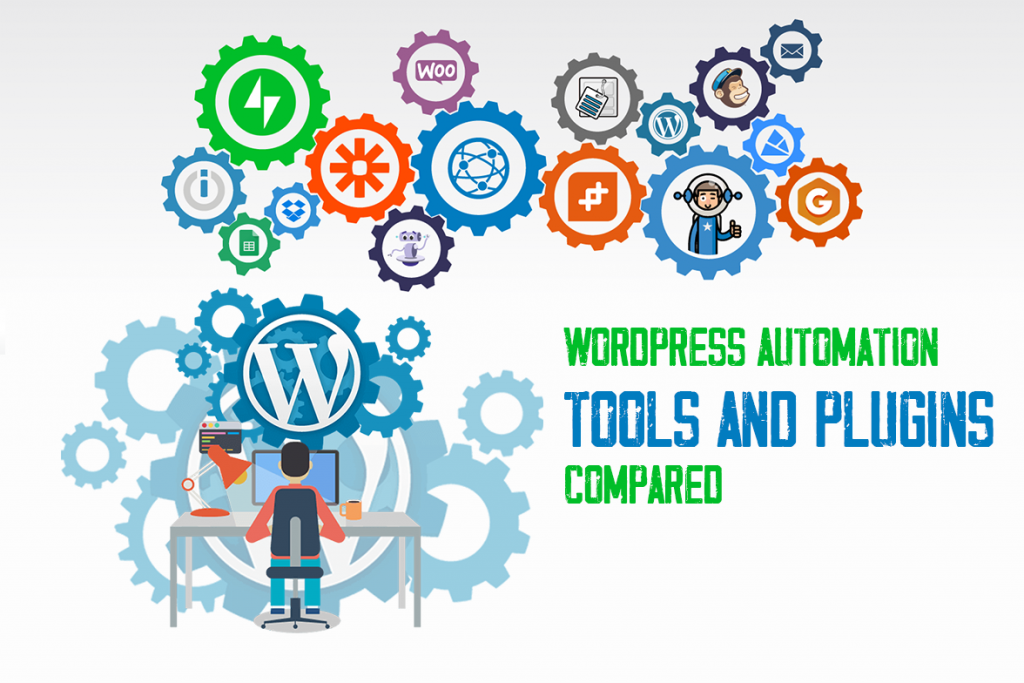Introduction: Why WordPress Automation Matters
Managing a WordPress site can be time-consuming. With tasks like posting blogs, updating plugins, and securing backups, it’s easy to feel overwhelmed. However, automation helps streamline these processes. In this guide, we’ll show you how automation tools can save time and make website management easier.
What Is WordPress Automation?
Put simply, WordPress automation means using tools or plugins to handle repetitive tasks. For instance, instead of manually sharing posts on social media, you can schedule them to go live automatically. This not only saves time but also ensures consistency.

Benefits of Automating WordPress
Automation isn’t just about convenience. It offers many benefits:
- Saves Time: Automating repetitive tasks frees you up to focus on creating content.
- Increases Productivity: You can achieve more in less time by letting plugins handle routine tasks.
- Reduces Errors: Automation minimizes human errors, like forgetting to back up your site.
- Improves Consistency: Scheduled tasks keep your site active, even when you’re busy.
Essential WordPress Tasks You Can Automate
Automation can handle many aspects of WordPress management. Here are some popular ones:
- Content Publishing
Scheduling blog posts ensures they go live at the right time, even if you’re away. This keeps your site updated consistently. - Backups
Regular backups protect your site from data loss. Tools like UpdraftPlus make it easy to schedule automated backups. - SEO Improvements
Plugins like Yoast SEO can analyze and optimize your content automatically. They suggest changes to improve your ranking without extra effort. - Social Media Sharing
Sharing new posts on social media is crucial, but it can be time-consuming. Automation tools like Jetpack or CoSchedule take care of this task for you. - Spam Management
Spam comments can clutter your site. Tools like Akismet block spam automatically, saving you time.
The Best Plugins for WordPress Automation
Choosing the right plugins is essential for effective automation. Here are some of the best options:
- Jetpack: This all-in-one tool handles backups, security, and social media sharing.
- UpdraftPlus: A user-friendly plugin for scheduling backups.
- Yoast SEO: Perfect for improving your site’s SEO without much effort.
- WPForms: Ideal for automating form responses and notifications.
- CoSchedule: A great tool for automating social media posts and content scheduling.
Step-by-Step: How to Set Up Automation
Here’s how you can get started with automation on WordPress:
- Pick Your Tools
Choose plugins that match your needs, such as backup or SEO tools. - Install Plugins
Add and activate your chosen plugins through the WordPress dashboard. - Configure Settings
Set preferences like backup intervals or content publishing schedules. - Test the Setup
Run a few tests to make sure everything works as expected.
Tips for Effective Automation
While automation is helpful, overusing it can lead to issues. Here are some tips:
- Review Automation Regularly: Make sure the tools still meet your needs.
- Don’t Automate Everything: Some tasks, like engaging with your audience, require a personal touch.
- Monitor Performance: Use analytics tools to track how automation impacts your site.
Conclusion: Make Automation Work for You
WordPress automation is a game-changer for website owners. By automating tasks like backups, SEO, and social sharing, you can save time and focus on what matters most—creating great content. With the right tools and strategies, automation makes managing your site stress-free and efficient.
Start automating today and experience the difference!
